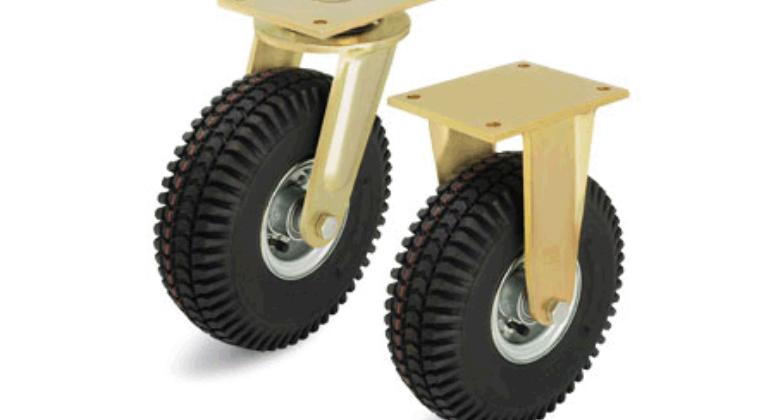
Ever fear running a business? It’s a daunting task, after all.
It involves the right marketing strategy, a business plan, and a good team, among others. Studies show that only 80% of new small businesses survive in their first year.
Being an entrepreneur with a running business can take up hundreds of hours in your week. Keeping a company running involves a lot of moving parts and heavy decisions. Thanks to streamlining, you can make your job easier.
Do you want to know how to streamline business endeavors? In this article, we show you eleven tips on how to streamline your business. Read on to discover how to make your work more efficient.
What is a Streamline Business
With a streamlined business, you can make your company more efficient. Without a proper system, your business can become cluttered and spiral out of control. Streamlining allows you to simplify your business by getting rid of unnecessary processes.
This can involve approaches like removing unnecessary steps or upgrading current technology. Aside from cleaning clutter, this can help you improve productivity. You can improve your services without spending your resources.
This can help you, and your employees avoid mistakes that can cost you. You can ensure that your workers will comply with company rules and regulations. Want to know how to streamline your business? Read on to find out more!
1. Outsource Tasks
Outsourcing is a great solution if your team struggles with the workload. Many businesses, whether small or big, can benefit from this. In can help you increase the maximum amount of workload your team can handle.
To start outsourcing tasks, identify the scope of your project. Give a clear description of your project goals and schedule. Some schedules can influence the final cost.
Select a vendor with the right experience and avoid choosing based on price. Check for portfolios and review a potential vendor’s expertise. Hiring freelancers to outsource tasks can help you focus on other elements of your work.
2. Reduce Paper Usage
Almost 3% of a company’s revenue goes to paper, filing, and printing. Consider going paperless and moving information to digital platforms. Thanks to modern technology, it can even help you improve the flow of information.
Most, if not all, Americans, carry a mobile phone with them at all times. Find digital alternatives to your usual paper products. If you have an iPad, you can use apps like Good Notes and Notability in place of paper pads.
Ditch your paper planner and replace it with your mobile device’s built-in calendar. Cloud storage is an excellent asset for businesses. A trustworthy provider allows you to store and access crucial information.
3. Automate Tasks
Automation is a valuable and innovative way to streamline a business. Many repetitive tasks can consume time and lessen productivity. With automation, you can save time and energy and ensure the proper delivery of these tasks.
You can automate tasks like scheduled posts and sending out client invoices. With social media, you can write posts in advance then schedule them throughout the week. Using digital tools can help you lessen your workload.
Automated emails allow you to send quick responses with your contact form. You may opt to send follow-up emails. Identify common tasks and find the right program to automate them for you.
4. Upgrade Your Technology
There are other ways to use technology to your advantage. If you want to streamline business, upgrade your devices and programs. The productivity of a business may also rely on its equipment.
If your company has outdated equipment, consider replacing these as soon as possible. Upgrading your technology can help you adapt to the modern age. As we continue to face new developments, adapting is essential to a business’s growth.
Online collaborative tools allow you to work with employees amidst the pandemic. Some apps like Basecamp, Slack, and Asana gives you and your team a shared platform. With these, you can deliver instant messages and share important files.
5. Be Strategic When Hiring Employees
A good work team is essential to keep a business running. As you build and grow your company, you may feel the need to hire more employees. You can benefit your finances by being more selective about who you work with.
Your business may already have a sufficient amount of workers. Learning how to assign roles to current employees can be simpler than hiring more people. Avoid giving your current workers too much workload and consider offering promotions.
Only hire more workers if you think your employees now cannot handle the workload. When hiring, create an online application form. You can eliminate candidates with different criteria to fit your need.
6. Limit Travel and Meetings
Traveling is not always essential for your business. You can always replace staff meetings with a detailed email. Traveling and having regular meetings can take up valuable time.
If you want to save time-end get more action, have fewer staff meetings. The pandemic gave the business a great opportunity to try out digital platforms. Some apps like Zoom and Google Hangouts are excellent platforms for online meetings.
Even then, a simple email can replace a meeting that could take hours. Only have face-to-face meetings for crucial updates or reports. Otherwise, you can stick to email, voice mail, and instant messaging.
7. Focus on Relationships With Suppliers
Partnerships can help you build and grow your business. If you have a supplier, learn how to put them first. Forgetting to approve invoices and deliver checks can hurt your relationships.
If you want to nurture your business partnerships, use apps. Some apps can help you track invoices and provide secure payments. These apps can also give you a portal with remittance and payment history.
This can make cash applications easier and improve your partnerships. Better payment can result in better suppliers. This is essential for people who are trying to grow small businesses.
8. Focus on Security
Migrating your business to digital means can help improve and build it. But if most of your data is online, ensure to secure it. You may put yourself at risk for fraud or other issues.
First, find a payment network that can provide secure transactions. This can help you avoid human error and sabotaging bank account details. Digital payments can also help you avoid traditional frauds like check payments.
Are you looking for a secure digital payment system? You can check out this outsourced accounting platform as a start.
If you store your data and resources on a cloud server, take extra security measures. You can secure digital data and accounts by using multi-factor authentication. Keeping your data secure can help you reduce stress and wasted time on potential risks.
9. Upgrade Accounting Systems
Using digital payment systems and invoices is only one part of an accounting system. Other software can help you automate simple tasks. These may include scanning receipts and managing expenses.
Many apps allow you to connect your CRM software. You may also integrate a point of sale system. If your accounting system is open source or crashes, consider getting an upgrade. Outdated software is prone to crashing and data breaches.
You may also lose customer data and risk data breaches. Upgrading your system protects you from digital problems. New features can help you make the workload easier and faster to accomplish.
10. Analyze Outcomes and Get Feedback
When you make adjustments to streamline business matters, study the outcomes. Track results that come from new processes and workflows. This can help you identify tedious issues and other problems that cost you money.
Try using a flowchart to track progress. Investigate which areas cause problems and why. Identify when expenses go up or when quality drops.
Consider getting feedback from your workers. Get an opinion on how well the new processes improve workflow. Some may give you ideas on how to further improve productivity.
Small details can help you identify problem areas easier. You can give your employees a survey. Consider keeping it anonymous to avoid bias.
11. Change and Improve
After identifying problems, focus on changing and improving. Prioritizing the issues can help you find the right solutions faster. Be careful when planning and managing changes.
Building your business involves upgrading systems and processes. Sometimes, you may need to buy new software or hire a new member. When you start implementing changes, be sure to communicate with your team.
Some changes may require training for colleagues. After making changes, monitor the results. Decide if the changes made improvements to the workflow.
If it meets your expectations, you may continue with normal business. Otherwise, you may keep working to fix problems. Stay in touch with your workers to get direct feedback.
Streamline Business Ventures Efficiently With These Tips!
Streamlining your business can help you save time, money, stress, and effort. If you want to make your business more efficient, try these eleven tips. These methods can help you streamline business matters and make work easier.
But why stop here? If you want to keep building and growing your business, check out our other posts! We offer more great business strategies and tips.







